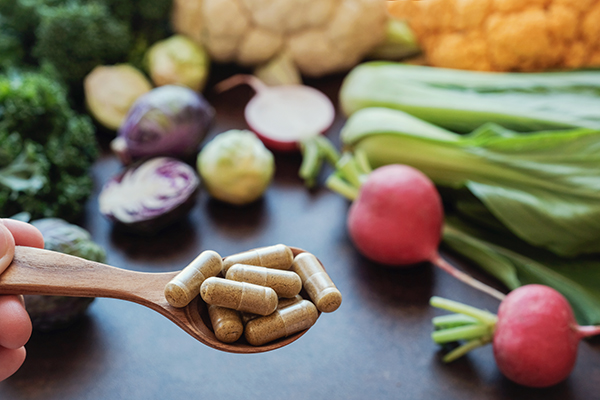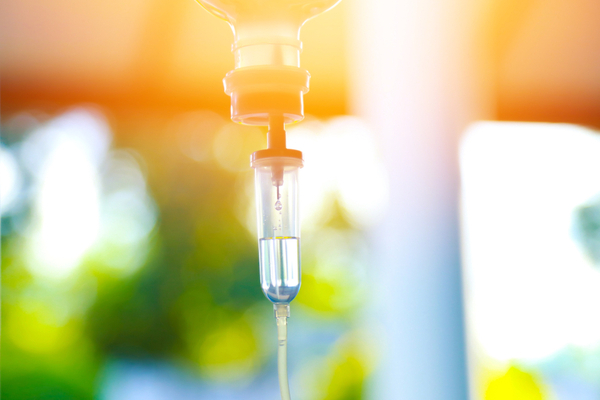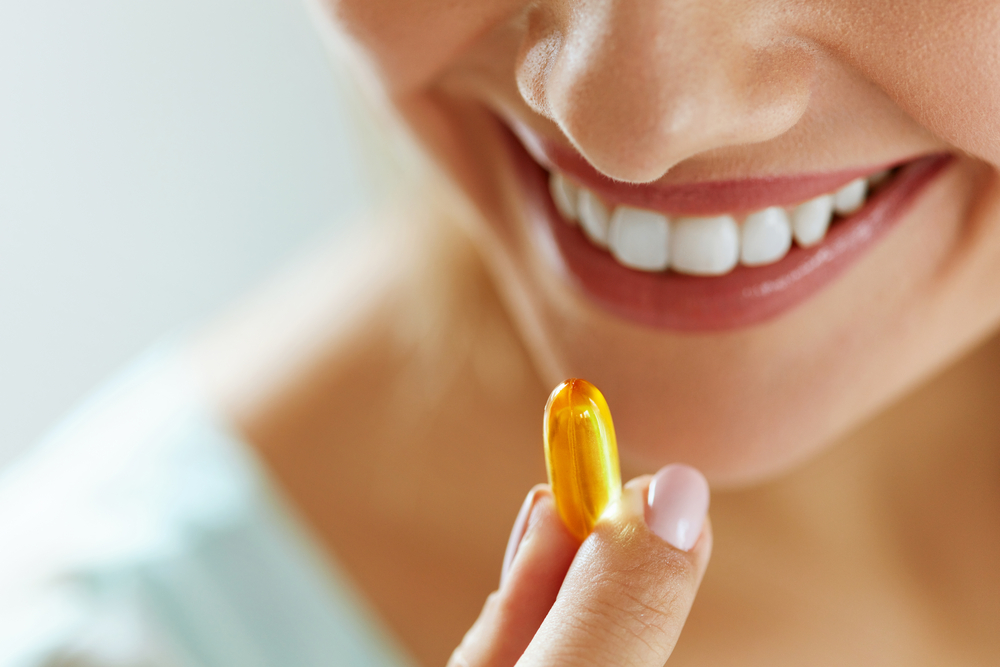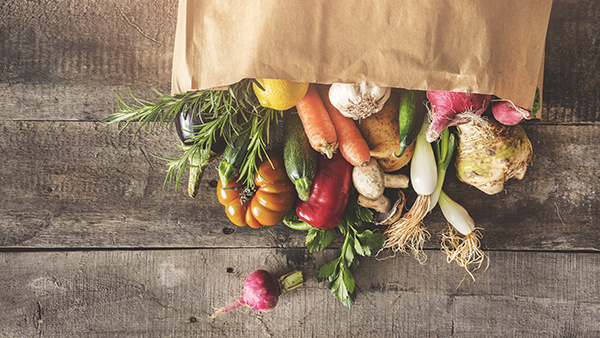Diets fuelled with the right vitamins and minerals are essential for our immune systems to function at their best. However, the relationship between nutrition and our immune functions is highly complex. Not only does nutrition impact immunity, but immune function also impacts the body’s ability to metabolise vitamins and minerals. So, it’s important that we are feeding our bodies correctly, to ensure this relationship is working optimally. With this in mind, we hear from Dr Gill Jenkins (Health & Food Supplements Information Service), who takes a look at which vitamins and minerals our immune systems need, together with current dietary shortfalls of these nutrients.

Which vitamins and minerals do our immune systems need?
Micronutrients have vital roles in immune systems whatever your age. The vitamins and minerals needed to sustain a good, healthy immune function include vitamins A, C, D, E, B2, B6 and B12, plus the minerals Folate, Iron, Selenium and Zinc.
Are we getting enough micronutrients?
Below-recommended intakes of nutrients involved in our immune systems are very common among many people, whatever their age in the UK. A 2019 report for HSIS, which evaluated micronutrient intakes from the UK NDNS and DEFRA Family Food Survey over the last 20 years, found there have been significant declines for several micronutrients during the past two decades. Intakes of riboflavin, folate, vitamin A, vitamin D, and iron significantly declined, while improvements were observed for zinc. In particular:
- Vitamin A intake has declined by 6.8 µg per day. It is essential to help metabolise iron, maintain healthy mucous membranes, skin and vision, immune function and cell specialisation.
- Vitamin D intake has reduced by a significant 22 per cent over 20 years. It is vital for normal bone, teeth, muscle and immune functions.
During the last nine years there has been a significant average yearly reduction in folate intake among men and women of all age groups including:
- Around 3-4μg/day for children and adults aged 19 to 64 years
- 5μg/day (equivalent to 45μg/day over the 9 years) for adults aged 65 years and over.
- In 2014/2015 – 2015/2016, the NDNS showed that 15 per cent of 11-18-year-old girls and six per cent of 19-64-year-old women failed to achieve the Lower Reference Nutrient Intakes (LRNI) for folate. Blood folate concentrations also decreased significantly over the last nine years for most age groups whatever your gender.
Let’s take a closer looks at the most important vitamins for our immune systems…
The B Family
Folate/Folic Acid: Essential for the formation of red blood cells, folate may reduce the levels of an amino acid (homocysteine). This reduction may have a protective effect against heart disease too.
Folate is also vital during pregnancy for efficient neural tube development which forms the brain and spinal cord. ‘Neural tube defects’, such as spina bifida in babies, appear to be linked to a ‘metabolic defect’ in folate metabolism in the mother.
This means that, even though the mother may have an adequate dietary intake of folic acid, her body cannot use it efficiently. Taking extra folic acid at the time when the neural tube is forming can reduce the chance of the baby having a neural tube defect.
However, the neural tube is formed very early during pregnancy – about a month after conception. Women are advised to take folic acid for 12 weeks prior to conception and to continue taking folic acid supplements until the 12th week of pregnancy. The best form in which to take folate is 5-MTHF.
 Riboflavin (B2): Part of the B group of vitamins, Riboflavin is essential for the formation of two substances: FAD (flavin adenine dinucleotide) and FMN (flavin mononucleotide). Both are vital for the processes that make energy available in the body, essential for our immune systems. Riboflavin works effectively with iron, vitamin B6 and folic acid. It is important for the nervous system, skin and eye health too.
Riboflavin (B2): Part of the B group of vitamins, Riboflavin is essential for the formation of two substances: FAD (flavin adenine dinucleotide) and FMN (flavin mononucleotide). Both are vital for the processes that make energy available in the body, essential for our immune systems. Riboflavin works effectively with iron, vitamin B6 and folic acid. It is important for the nervous system, skin and eye health too.
Vitamin D
Low vitamin D status is common in the UK. In the latest government survey – NDNS-RP – during January to March, 19 per cent of children aged 4 to 10 years, 37 per cent of children aged 11 to 18 years and 29 per cent of adults had 25-OHD below 25nmol/L, the threshold indicating risk of deficiency. That’s why experts recommend supplementation all year round, and in particular, people should take 10 micrograms daily during the autumn and winter months as recommended by Public Health England.

Vitamin C
Vitamin C (ascorbic acid) is a water-soluble, anti-oxidant vitamin. The body cannot make it, so you must take it in your diet or in a dietary supplement.
You can find vitamin C in foods including citrus fruits or their juices, tomatoes, red and green peppers, kiwi fruit, strawberries, broccoli and potatoes. Here’s a list of which foods are packed with vitamin C and approximately how much vitamin C they contain:
- Clementine (1 = 30mg of vitamin C)
- Cherry tomatoes (6 = 15mg of vitamin C)
- Kiwi fruit (1 = 60mg of vitamin C)
- Strawberries (1 cup = 90mg of vitamin C)
- Peppers has (1 cup = 120mg of vitamin C)
- Broccoli (1 cup = 80mg of vitamin C)
- Baked potato (200g = 20mg of vitamin C)
- Orange juice (100ml = 50mg of vitamin C)
The vitamin is found in high concentrations in phagocytes – the immune function cells – that help to fight infection. If the body develops an infection, the phagocytes are activated and release Reactive Oxygen Species (ROS). Whilst ROS appear to have a role in deactivating viruses and bacteria, they may also harm ordinary human cells. Vitamin C is a water-soluble antioxidant that may protect the ordinary human cells from damage by ROS. Some evidence indicates that vitamin C levels in the body may fall during infection.
Scientific evidence for vitamin C
Laboratory studies have shown that vitamin C can help to alleviate infections but clinical human studies have shown that vitamin C does not reduce the incidence of common colds in the overall population neither does it treat colds once people have them. However, for people that are very physically active, research shows that vitamin C can help to reduce the number of colds.
There is also some evidence that vitamin C may help in other infections but research data is limited and there is no knowledge on appropriate dosage and timing over which vitamin C could be used in relation to an infection.
How much vitamin C do we need?
The UK government guideline is for us all to achieve the Recommended Nutrient Intake of vitamin C at 40mg a day. This is set from a starting point that 10 mg/d of vitamin C is sufficient to prevent and to cure all the clinical signs of scurvy. But 10mg/day is not enough to give measurable plasma (blood) levels of the vitamin.
Myth-busting on vitamin C and plasma levels:
Vitamin C begins to appear in plasma at intakes of about 30 mg/d and reaches a maximum concentration with intakes of about 70 mg/d. Significant amounts of vitamin C are present in plasma when intakes are 40 mg/d. The RNI has therefore been set at 40mg/day and the LRNI at 10mg/day. The guidelines are based on the amount of vitamin C that will prevent the established adverse effects of vitamin C deficiency – i.e. scurvy and poor wound healing.
A daily amount of 40mg of vitamin C does not saturate the plasma levels. The vitamin C level in plasma of people in good health becomes saturated at about 70 micromol/L when the intake is about 200mg/day. Below intakes of 100mg daily there is a steep relationship between dose and plasma concentration. This relationship flattens out between intakes of 100mg and 200mg daily. If regular intakes are below 100mg/day, the benefits could be expected from higher intakes on the basis of the intake/plasma concentration curve. However, infection itself causes altered vitamin C metabolism and cases of infection can cause decreased vitamin C plasma levels.
Sources of vitamin C
For people wanting to aim for a vitamin C intake of 200mg daily from their diet this would mean, consuming for example one cup of peppers and one cup of broccoli, 200ml of orange juice plus a cup of strawberries or one kiwi fruit, 12 cherry tomatoes and two clementines. Alternatively, you could take a high-quality vitamin C supplement.
 What about minerals?
What about minerals?
Selenium
Selenium intakes have changed little over the past decade but again, intakes fall well below recommended levels in some groups. In the latest government research – NDNS-RP – 26 per cent of 11-18-year olds, 25 per cent of 19-64-year-olds and 36 per cent of those aged 65 and over had selenium intakes below the LRNI.
For women across these age ranges the figures were 45 per cent, 46 per cent and 66 per cent respectively. Again, LRNIs are bad news for people’s health and wellbeing and we all need selenium for a healthy immune system, thyroid function, protecting cells from oxidative stress and inflammation, as well as helping to keep hair and nails healthy.
Zinc
Zinc intakes have improved slightly over the past 20 years although below-recommended intakes occur in some population groups. More than one in five (22 per cent) of 11-18-year olds, 11 per cent of 4-10-year old’s, eight per cent of 19-64-year olds and seven per cent of people 65 and over have a zinc intake below the LRNI.
Amongst girls aged 11-18 years, more than a quarter (27 per cent) have a zinc intake below the LRNI. We need good zinc nutrient levels to fuel our bodies daily and this mineral helps with health functions such as:
- Tissue growth
- The growth of immune cells
- The body to produce its own antioxidant enzymes
- Fertility
- Helping to keep hair, skin and nails healthy.
Iron
During the past 20 years, iron intakes have reduced by five per cent overall. We all really need iron in our diets to help ensure healthy immune systems and it also contributes to:
- Normal energy metabolism
- Cognitive function
- Formation of red blood cells
- Haemoglobin
- Oxygen transport in the body
- The reduction of tiredness and fatigue.
Some age and gender groups have mean intakes of iron below the Reference Nutrient Intakes (RNI) and substantial proportions with intakes below the LRNI, in particular girls aged 11 to 18 years and women aged 19 to 64 years. More than half (54 per cent) of girls aged 11-18 years and more than one quarter (27 per cent) of women aged 19-64 have intakes of iron below the LRNI. And such low scores are bad for our health and wellbeing, making us more vulnerable to problems like a compromised immune function and osteoporosis.
To summarise…
Micronutrients are important for our immune functions to work well. Therefore, low intakes, especially in those nutrients where we have levels below the LRNI, are bad news for our immune system and can impact it. Therefore, you should ensure that you are getting high enough levels of micronutrients. Getting vital nutrients from the diet is essential and following government healthy eating guidelines is key for people’s good health. A multivitamin can help bridge nutrient gaps where dietary intakes are lacking, to keep our immune systems healthy and fit.
Find out more at www.hsis.org.
Click here to discover more ways to boost your immune systems!








